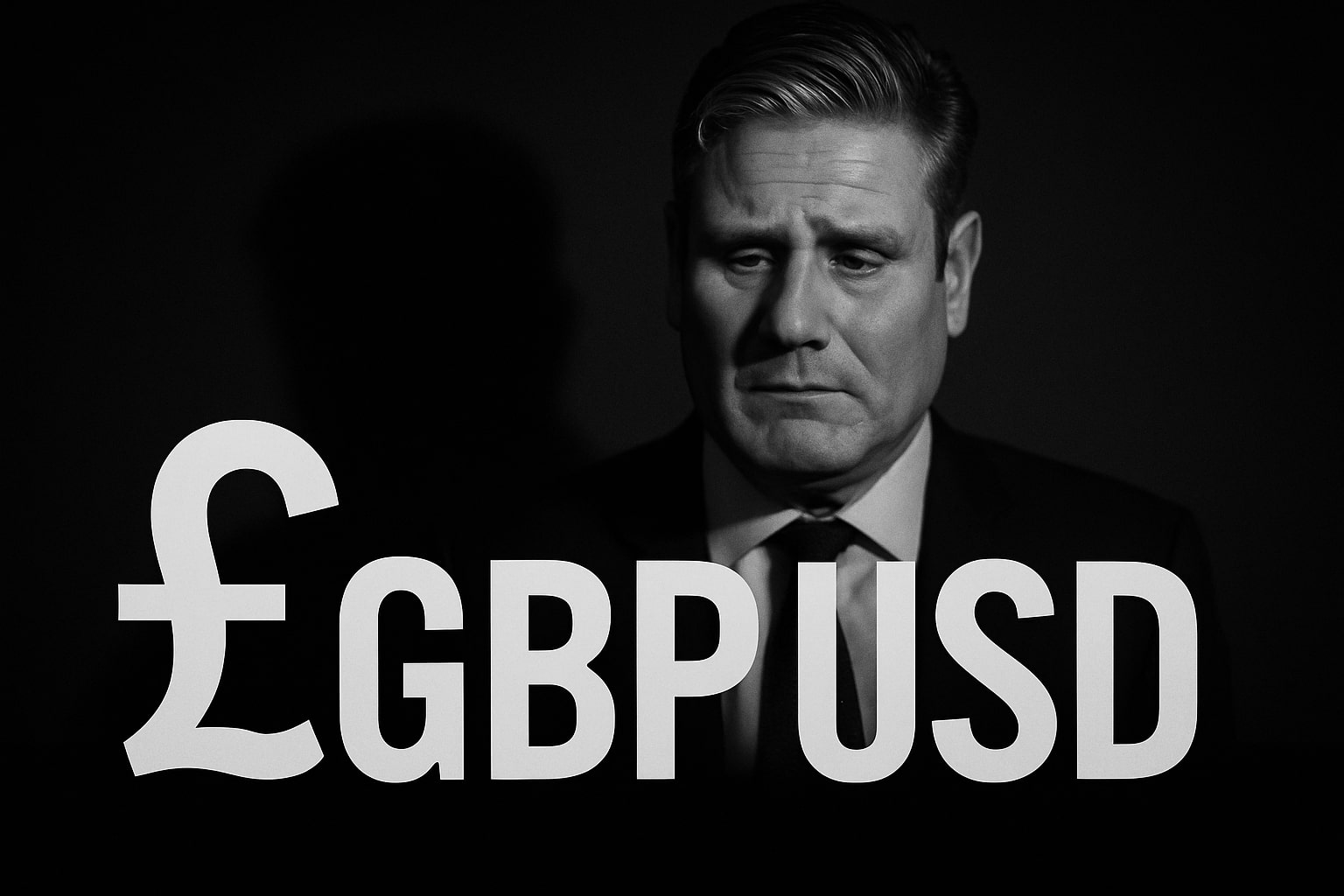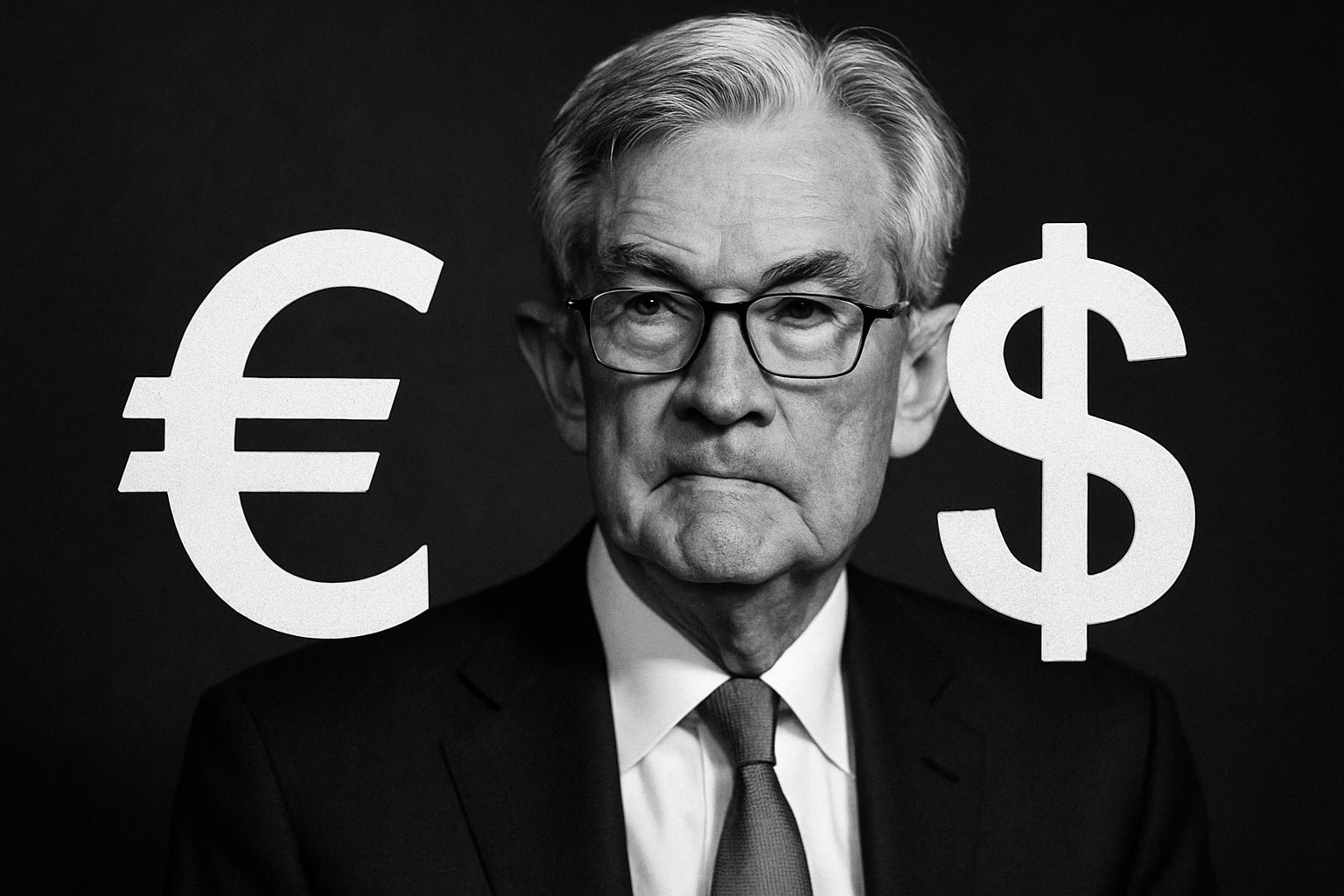
EUR/USD Surges Past 1.1700 Amid Fed Erosion and Eurozone Strength
Dollar Drops Below 97 as Political Risk and Soft Data Fuel Euro Rally | That's TradingNEWS
Fed Tensions And Political Undercurrents Weigh On The Dollar
The recent surge in EUR/USD to 1.1754—the highest level since September 2021—has been powered less by euro strength and more by increasing disarray in U.S. monetary policy signals. Concerns that the Federal Reserve may be forced into a dovish pivot, either by deteriorating macro data or political interference, have weakened the dollar sharply. U.S. initial jobless claims fell slightly to 236,000, but continuing claims climbed to 1.97 million—the highest since late 2021. Meanwhile, Q1 GDP was revised downward to -0.5% from -0.2%, reinforcing the narrative that economic growth is cooling faster than expected. Durable goods orders showed temporary resilience, but consumer spending data remains mixed, with May showing a contraction after a brief Q1 bump.
President Trump’s public criticism of Jerome Powell and the administration’s overt signaling of a possible leadership change at the Fed have amplified concerns over central bank independence. The speculation around dovish candidates like Kevin Hassett or Scott Bessent replacing Powell is injecting further volatility into dollar pricing. Fed credibility, already under scrutiny from markets that now price in 65 basis points of rate cuts by year-end, is deteriorating. The U.S. Dollar Index dropped to 96.99—its lowest reading in over three years—before stabilizing just above 97.30.
Eurozone Stability And ECB Data Dependencies
In contrast to the U.S. narrative, the euro’s gains have been grounded in relative policy steadiness from the European Central Bank. ECB Vice-President De Guindos reiterated inflation is nearing target, while ECB’s Knot confirmed that further easing remains data-dependent. France's CPI cooled to 0.9%, but Spain’s HICP accelerated to 2.2%, breaching the ECB’s 2% threshold and keeping rate cut bets subdued.
Markets now price in just 13 basis points of ECB easing for September, reflecting growing belief that the eurozone may pause longer than expected. Germany’s upcoming HICP and retail sales data are now critical. Any upside surprise would reinforce the case for the euro to remain elevated. The broader euro strength is also tied to technical demand zones holding across 1.1650–1.1680, making each economic print increasingly relevant for positioning.
Geopolitical Resolution And Risk-On Rotation
EUR/USD’s seven-day winning streak coincided with the ceasefire between Israel and Iran, which removed a major safe-haven premium from the dollar. The easing of geopolitical risks bolstered risk sentiment globally, with U.S. indices like the Nasdaq and S&P 500 surging to new highs. This supported the broader dollar sell-off and capital rotation into higher-yielding currencies and equities. The euro benefited from the unwind of dollar longs, particularly among institutional managers heavily weighted toward U.S. assets.
While geopolitical tensions can re-emerge, the absence of new conflict catalysts has allowed euro bulls to control momentum. The macro backdrop has shifted from fear to opportunistic reallocation, which naturally supports the euro in a low-volatility, high-liquidity environment. As long as risk appetite holds, EUR/USD remains biased to the upside.
Technical Outlook: Higher Highs But Overstretched
From a structural standpoint, EUR/USD is maintaining its bullish trend. The breakout above 1.1700 triggered a test of the 1.1754 resistance zone, now acting as a near-term ceiling. RSI readings hover near 70, and the pair remains above both its 20-day and 50-day SMAs. Immediate support sits at 1.1653 and 1.1600, both of which align with previous breakout zones and short-term fib retracements.
If EUR/USD breaches the 1.1800 handle, upside targets open at 1.1916 and 1.2019—the latter corresponding to a 38.2% retracement from the 1.6039 to 0.9534 macro decline. On the downside, a clean break below 1.1600 would risk a retracement back to the 50-day SMA at 1.1515, undermining the short-term bullish thesis but not yet reversing the medium-term structure.
Strategic Positioning: Buy On Dips Into Structural Support
Despite near-term exhaustion, the structure favors further euro appreciation. As long as Fed uncertainty remains elevated and political interference over Powell’s leadership persists, the dollar will likely remain under pressure. With inflation data failing to cool decisively and Q1 GDP deeply negative, rate cut expectations are growing stickier. The market’s pricing of three cuts by December creates a floor under EUR/USD unless the Fed can reclaim its hawkish narrative.
The bias remains to buy EUR/USD into any dip toward 1.1650 or even 1.1600, with stops placed just below 1.1515. Upside objectives remain 1.1800 in the short term, followed by a potential breakout toward 1.1916 over the next few weeks. The structural bullish setup is intact, but tactically, entries must be timed carefully due to crowded positioning and overbought technicals.
Verdict: Long EUR/USD on Dips | Tactical Buy with Structural Support | Short-Term Resistance at 1.1750–1.1800 | Hold Above 1.1600 Unless Fed Narrative Shifts Hawkishly
That's TradingNEWS
Read More
-
SCHD ETF Holds Ground With 3.6% Yield as Dividend Investors Eye Stability Over Growth
15.10.2025 · TradingNEWS ArchiveStocks
-
Ripple XRP (XRP-USD) Steadies at $2.43- SEC Shutdown Freezes ETF Decisions, Inflows Hit $61.6M
15.10.2025 · TradingNEWS ArchiveCrypto
-
NG=F Falls to $2.99 as Record Supply Outpaces Demand Despite 16.9 Bcf/d LNG Exports
15.10.2025 · TradingNEWS ArchiveCommodities
-
USD/JPY Price Forecast - Yen Weakens to 151.30 Amid Dollar Selloff
15.10.2025 · TradingNEWS ArchiveForex



















